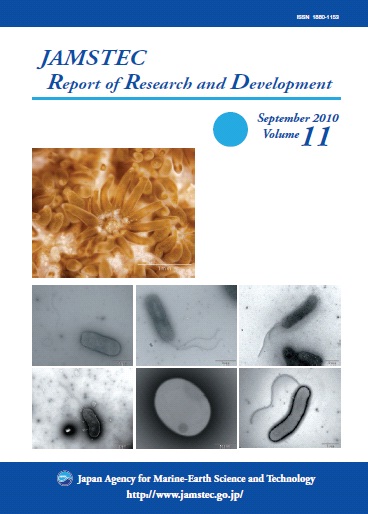We have isolated thirteen different bacterial strains as poly ε-caprolactone (PCL)-degrading bacteria from the Kurile and Japan Trenches at a depth of 5,000-7,000 m (deeper ocean bottoms). The isolates belong to the
Shewanella,
Moritella,
Psychrobacter and
Pseudomonas genera. This is the first record of PCL degrading bacteria isolated from deep-sea environments at depth of over 5,000 m. Six strains of the isolates, numbered CT01 in genus
Shewanella, CT12, JT01 and JT04 in genus
Moritella, JT05 in genus
Psychrobacter, and JT08 in genus
Pseudomonas were selected for investigation of their cell shapes, degrading abilities for several aliphatic polyesters, and growth profiles. The cell shapes of the strains, except JT05, were rod-shaped, non-spore-forming and motile by means of a single or multi polar flagella. The cell shapes of JT05 were coccal with no visible flagella. From the results of degradation tests on six different alihphatic polyesters, all strains could degrade only PCL. Strains CT01, CT12, JT01 and JT04 are psychrophilic and pressure tolerant bacteria and three strains except JT04 showed typical piezophilic growth profiles. Therefore, it is possible that these strains might play a role in degrading aliphatic polyesters under deep-sea conditions, ie., low-temperatures and high hydrostatic pressures.
View full abstract
